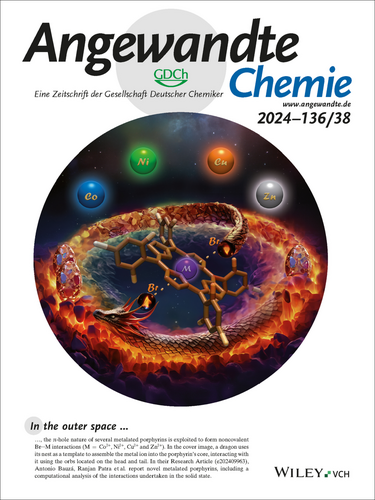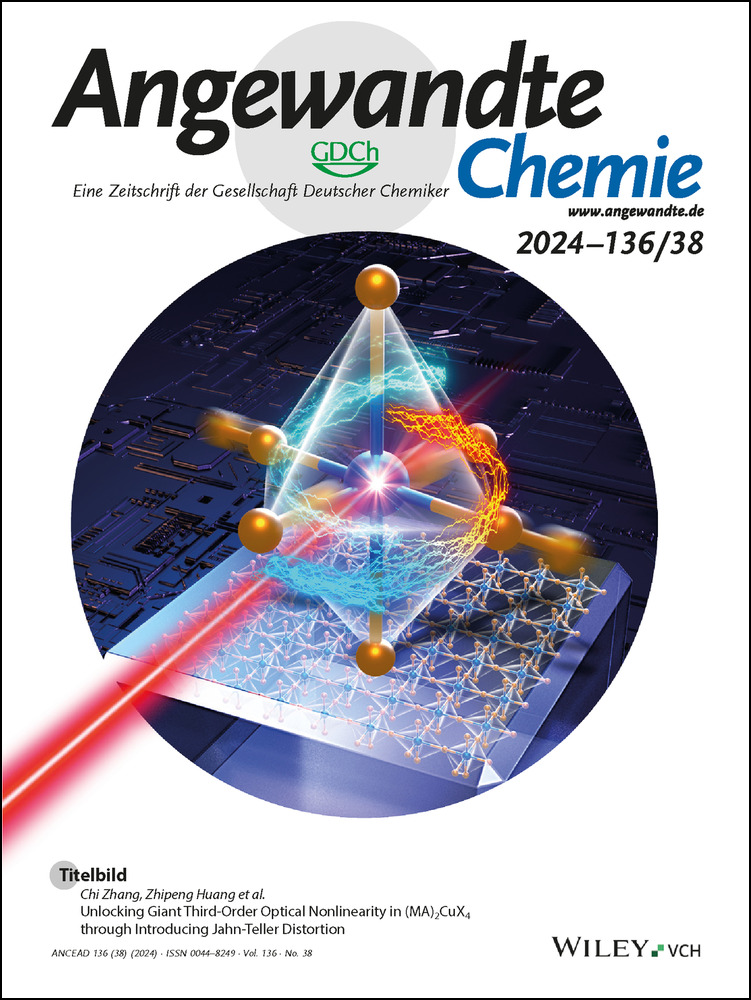Innenrücktitelbild: From Coordination to π-Hole Chemistry of Transition Metals: Metalloporphyrins as a Case of Study (Angew. Chem. 38/2024)
Graphical Abstract
In the outer space , the π-hole nature of several metalated porphyrins is exploited to form noncovalent Br⋅⋅⋅M interactions (M = Co2+, Ni2+, Cu2+ and Zn2+). In the cover image, a dragon uses its nest as a template to assemble the metal ion into the porphyrin's core, interacting with it using the orbs located on the head and tail. In their Research Article (e202409963), Antonio Bauzá, Ranjan Patra et al. report novel metalated porphyrins, including a computational analysis of the interactions undertaken in the solid state.





